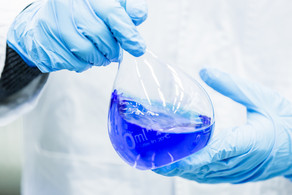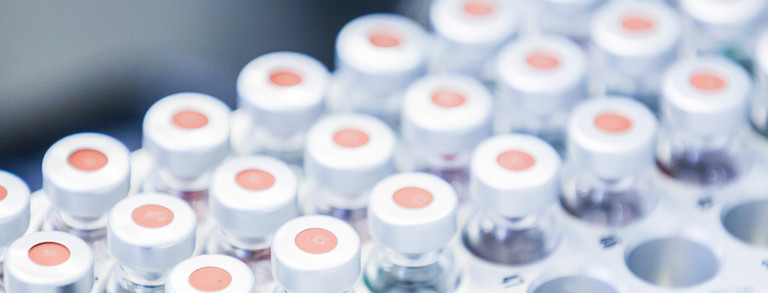Physical Processes and Phenomena at the Solid-Liquid Interface During Dissolution of Formulations of Amorphous Solid Dispersions
The dissolution of pharmaceutical formulations determines the bioavailability and therefore plays a key role in the development of drug products. One way to increase the solubility of active pharmaceutical ingredients (APIs) is to incorporate them into a polymer matrix as amorphous API, which is referred to as an amorphous solid dispersion (ASD). In order to avoid recrystallization during dissolution, it is necessary to investigate the release mechanism and to develop suitable models for prediction.
Description
During the dissolution of an ASD, a supersaturated solution is formed, which can lead to recrystallization at the ASD/bulk medium interface. However, the crystalline API has a lower solubility so that recrystallization reduces the previously generated solubility enhancement [1, 2]. The whole release mechanism is not yet fully understood.
The aim of this project is to investigate the dissolution/recrystallization behaviour of ASDs experimentally and to deploy an equation of state in order to predict both dissolution and recrystallization profiles in aqueous interfaces. At the same time, the underlying understanding of the release mechanism shall be deepened to ensure the development of optimally designed ASD formulations within the pharmaceutical industry.
References
| [1] | A. S. Indulkar, X. Lou, G. G. Z. Zhang, L. S. Taylor: “Insights into the Dissolution Mechanism of Ritonavir-Copovidone Amorphous Solid Dispersions: Importance of Congruent Release for Enhanced Performance” Molecular Pharmaceutics, vol. 16, pp. 1327-1339, 2019. |
| [2] | J. Brouwers, M. E. Brewster, P. Augustijns: "Supersaturating drug delivery systems: the answer to solubility-limited oral bioavailability?" Journal of Pharmaceutical Sciences, vol. 98, pp. 2549-2572, 2009. |







